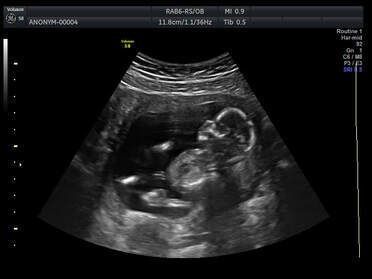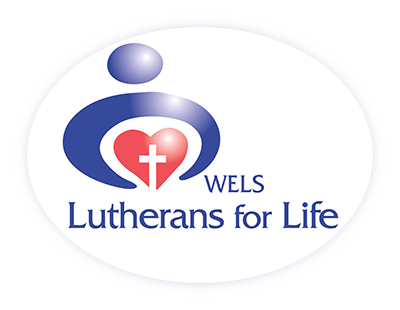
Introducing ultrasounds to our pregnancy clinic has been extremely beneficial for our life-saving ministry. Through this free and confidential service, clients have been empowered to make life-affirming decisions and bond with their babies. To understand ultrasounds, and their role in our mission, we spoke with the expert, Beth Hildenbrand.
Beth serves as the Clinic Coordinator and sonographer. We asked her about her experience inside the ultrasound suite and she provided plenty of insight!
What sparked your interest in sonography?
“I had an interest in health care, so I began to research my options. When I came across sonography, it felt like a natural fit. This career could incorporate my love for problem-solving and give my compassionate heart a focus as I helped patients. Soon after coming to that realization, I enrolled in a program to become certified.”
Were you always interested in obstetric sonography?
“No. When I first enrolled, my intent was to focus on cardiac patients through echo sonography. God, as He tends to do, had different plans. I was friends with Vicki Raddant (a longtime volunteer) through church and she invited me to tour the offices at WELS Lutherans for Life. This was my first touch with the organization. While I was on the tour, I met Peter Georgson, the Executive Director. I noticed a poster behind him that listed the organization’s goals for the next ten years. Adding ultrasounds was on the list, and it made me reconsider. I went home and felt that God had put this on my heart for a reason. I changed programs that evening. Looking back, it still amazes me that God used such a small interaction to make such a big impact on my life.”
When did you begin working for WELS Lutherans for Life?
“Once I graduated from the sonography program, I worked in a hospital before transitioning to WELS Lutherans for Life. When I first started in 2014, I was in an administrative role.”
Tell us about your role in the medical conversion.
“The conversations about becoming a medical facility began before I arrived, but the vision started to become a reality in the spring of 2016. I began investigating various avenues, collecting information, and comparing models of other centers that provided ultrasounds. Pam Mankse was integral in this process and really helped coordinate these efforts. By the fall of 2017, we were performing ultrasounds on clients.”
What have you learned through your role?
“I am constantly amazed at how being kind can make such an impact. We have so many clients compliment us on our service and compassionate staff, it really makes me realize that they have not experienced the same elsewhere. Everyone deserves to be treated with dignity and respect, and I am glad that we can provide our clients with a positive experience.”
What makes sonography unique in a pregnancy center setting?
Generally, when you are performing obstetric sonography, you are working with patients that are excited to be pregnant. They wanted to have a baby, and because they have been practicing pre-natal care and seeing a doctor regularly, they know what to expect. This is not what we tend to experience in a pregnancy center. Sometimes clients are unsure what to expect during an ultrasound. So much discourse exists on the topic that I think they envision a random clump of cells appearing. Then, when a heartbeat is detected or the shape of the body is clearly visible, they are taken aback. Watching them see their baby for the first time and see it become real for them is amazing.”
Explain the difference between our clinic and the hospital.
“Clients come to our clinic to confirm a pregnancy and receive a due date. This initial screening allows them to process their pregnancy in a safe, non-judgemental environment. Then, if they choose to carry, we refer them to a doctor if they do not have one. Once they have established care with a doctor, they can have additional ultrasounds. These usually include one at the end of the first trimester to check for chromosomal abnormalities and one at 20 weeks to look at the fetal anatomy and find the sex.
Of course, our clients can come back for another ultrasound for reassurance, but they will receive more information through their doctor.”
Explain the role of a doctor for our clinic.
Dr. Matthew Lee serves as an Obstetric Consultant for our clinic. Once the ultrasound images are uploaded, he reviews them to ensure the pregnancy is in the uterus, the fetus is developing correctly, confirm the heart rate, address areas of concern, and verify the measurements. Once he has reviewed the images, he can sign off and it becomes an official ultrasound report.”
What makes your job the most challenging?
“Knowledge that this may be the last time the baby on the monitor is seen. Realizing that some of these babies are not acknowledged or seen as valuable breaks my heart. Examining an excited mom and not finding a heartbeat is also extremely difficult. Having to tell her that she miscarried is absolutely heartbreaking.”
What makes your job fulfilling?
“I love being on a team that offers support. Sometimes women come to us and are unsure of how they should react to pregnancy. Society sees unplanned pregnancies as a problem, so giving her permission to be excited and empowering her through our services is incredible.”




